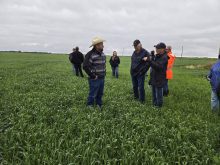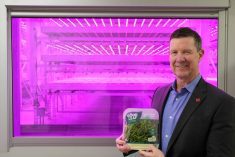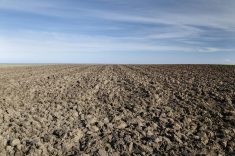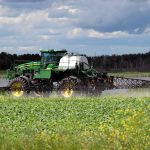Alfalfa can pull down its own nitrogen from the atmosphere, but can’t conjure up phosphorus, potassium, sulphur, and boron out of thin air
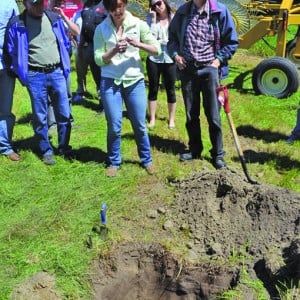
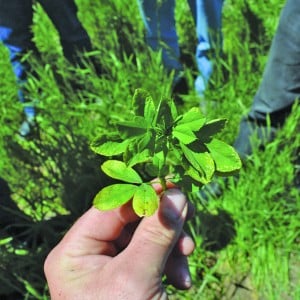 Alfalfa isn’t a plant that complains a lot, but white spots on its leaves are a clear plea for more potash.
Alfalfa isn’t a plant that complains a lot, but white spots on its leaves are a clear plea for more potash.
Read Also

CUSMA access key among other trade noise: Seeds Canada panel
Seeds Canada conference panelists say Canada needs to stay focused and wait as U.S. trade and tariff chaos develops, and a Canada-U.S.-Mexico Agreement review looms
After poking around in the field surrounded by whispering poplars at the recent Hay Day tour near Neepawa, provincial soil fertility specialist John Heard pointed out a shining example of “full-blown potassium deficiency.”
Farmers gathered around excitedly, firing off questions whether it was possible to guesstimate how much potash would need to be applied, or whether a boron deficiency was present, too.
“This is just telling you that the patient is dead or dying. To know how to bring it back to life, you’d have to soil test,” said Heard.
Alfalfa can pull down its own nitrogen from the atmosphere, but it can’t conjure up other nutrients such as phosphorus, potassium, sulphur, and boron out of thin air. Every ton of hay taken off of it also removes 60 pounds of potash.
“It’s just a fact of life. On some of these very sandy soils, there’s often a low supply, and we tend to have more round balers than manure spreaders in the field,” said Heard.
Economics is also an issue, he added, because potash is four times the price it was a decade ago.
Switching the field over to pasture for a few years would staunch the bleeding, but it wouldn’t offer a quick fix because grazing ruminants only redistribute what’s there, said Heard.
The field was seeded to alfalfa and grass three or four years ago and had been in production for two years, said owner Jim Pollock. Prior to that, it grew wheat and canola. Getting the forage stand established took two tries, and a low spot on one end saw the alfalfa drowned out.
Even though the soil was very sandy, each acre still managed to produce about three to 3.5 1,400-pound round bales with an annual application of about 25 to 40 pounds of phosphorus and 20 to 25 pounds of potash.
“We’re likely not putting on enough potash,” said Pollock, adding his cattle winter about five miles away, so spreading manure isn’t an option.
A shallow hole in one corner of the field showed the soil was almost all fine yellow sand, with a darker, undulating brown layer about six inches thick sitting atop a sandy subsoil.
Grey shading in the soil showed where the rising and falling water table in the field had oxidized the mineral from its typically rusty-orange colour, noted Marla Riekman, a land management specialist with Manitoba Agriculture, Food and Rural Initiatives.
She demonstrated a “fizz” test by adding a drop of hydrochloric acid to a handful of soil. No bubbling occurred, which indicated that carbonates had mainly leached down into the subsoil.
Alfalfa is a good choice for this particular type of land, said Heard, because even with a high water table, wheat roots tend to go no farther than six feet deep.
Pollock concurred, but noted that once the deep-rooted crop got its roots down far enough, a good crop of alfalfa is possible even in a dry year.
“It’s getting the thing established, that’s the thing,” said Pollock.
In an earlier presentation on forage fertility, Heard said phosphorus is critical for good nodulation on alfalfa. It also helps to extend the life of an existing alfalfa stand, with good P levels improving more shoot growth recovery and size.
“Do I reseed, or just put on more phosphorus? With proper phosphorus nutrition, we tend to retain a greater percentage of legume in a stand,” said Heard.
He also said research done at AAFC Brandon showed no benefit to fertilizer banding, possibly due to the offsetting effect of potential injury to the plant’s crown.
“Forages, once they are established, are very good at accessing surface nutrients,” said Heard. “So that’s a bit of good news. Don’t waste your time trying to get phosphorus into the soil, broadcasting works just fine.”







